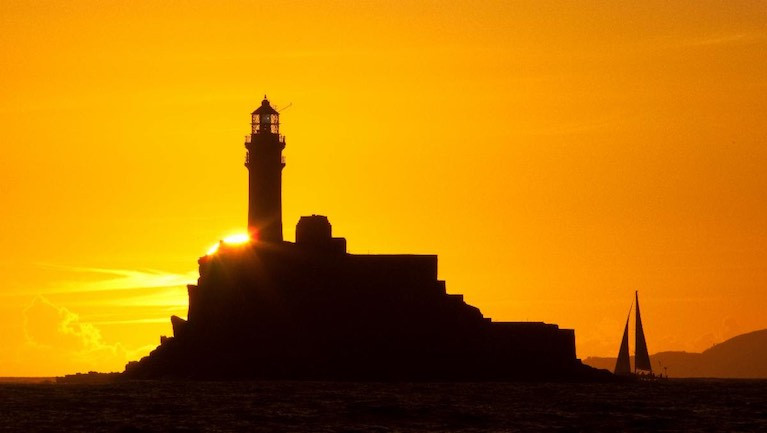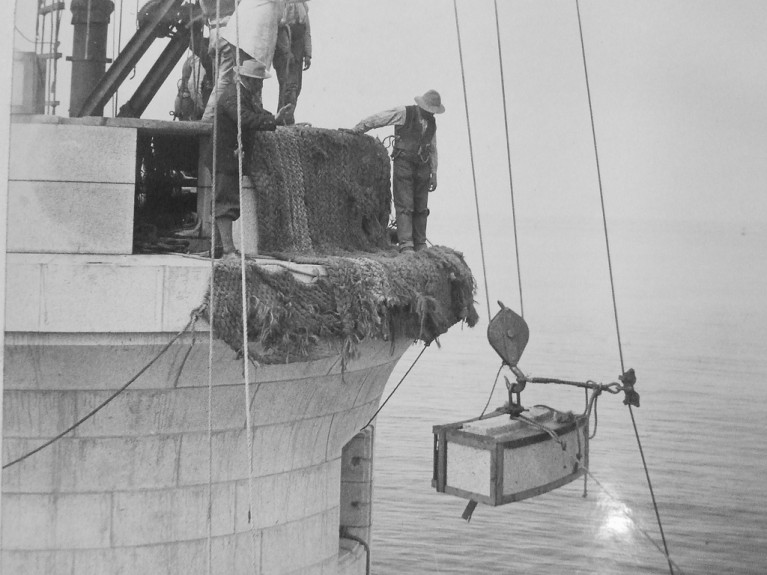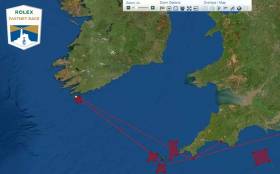Displaying items by tag: Fastnet Yacht Race
The Fastnet Yacht Race & Recalling the 1979 Force 10 Storm (PODCAST)
Bow to bow, they stretch five kilometres – that's how the Rolex Fastnet yacht race organisers have welcomed the record entry for this summer’s race, which will have a new finish in Cherbourg, France.
Some ten Irish entries are among the record 400 registrations for what Afloat has described as one of the most competitive Fastnet races in years.
 The 2021 Rolex Fastnet Race starts on August 8th Photo: Kurt Ariigo/Rolex
The 2021 Rolex Fastnet Race starts on August 8th Photo: Kurt Ariigo/Rolex
Fastnet Race 1979 Recalled
It’s only 16 months, but may seem like 16 years, since the 40th anniversary of the 1979 Fastnet race was marked with a lunch – yes, remember those - hosted by Howth Yacht Club.
Surviving representatives of all 18 Irish yachts in the 1979 race were invited to the first such reunion, many of whom still had frightening memories of the Force 10 storm that claimed 15 lives, sinking 5 yachts - with 136 sailors rescued by the emergency services.
Almost 3,000 competitors and spectators were sailing the 605 nautical mile course from the Isle of Wight to the Fastnet lighthouse and back to Plymouth when conditions changed dramatically on the night of August 13th, 1979.
The ferocity of the storm had not been forecast in time, and there was minimal communication and no satellite technology on the yachts — with even the best equipped yachts unable to deal with 50-60 knot winds.
 A Royal Navy helicopter rescues the crew of the yacht Camargue during the August 1979 Fastnet Race Photo: courtesy RTE
A Royal Navy helicopter rescues the crew of the yacht Camargue during the August 1979 Fastnet Race Photo: courtesy RTE
Kevin Burke, who had been on board Rapparee, and his navigator John Marrow, and their partners Angela and Caroline, recalled the events and aftermath for an interview first broadcast on RTÉ Seascapes.
Former Naval Service commodore John Kavanagh, who was on board the LÉ Deirdre for the rescue effort, along with sailor and RAF search and rescue helicopter pilot Donal McClement and Michael O’Leary also shared their memories.
You can listen on this week’s Wavelengths podcast here
Lecture: “The Fastnet Lighthouse- History, Evolution and Iconic Status” - This Thursday 6th February
The next Glenua lecture is to be held this coming Thursday 6th February (and not the following week as previously advertised).
The venue will be at Poolbeg Yacht & Boat Club, Ringsend, Dublin and where an entry contribution of €5 will be in aid of the RNLI.
The subject of the lecture (starting at 20.00) is: “The Fastnet Lighthouse - history, evolution and iconic status”
The speaker is Alan McCann who worked as an engineer for over twenty years for the Commissioners of Irish Lights. He has extensive knowledge of the history and technical evolution of Irish lighthouses. His engineering experience includes the design, installation and maintenance of both lighthouse equipment and floating aids. He was heavily involved in the automation of the Fastnet in the late 1980's.
Fastnet is the tallest and widest rock lighthouse tower in Ireland and Great Britain. It was a monumental achievement when completed in 1904. The graceful upward curve of the new lighthouse is composed of more than 2,000 interlocking granite blocks quarried in Cornwall. It is still a vital navigational aid, despite automation in 1989. Its iconic status is undiminished, not least because of the biennial Fastnet Yacht Race which in 1979 was the occasion of the greatest yacht-racing disaster ever witnessed.
Alan’s illustrated talk will trace the architectural and navigational evolution of the Fastnet rock tower from the 1850's to the present day. He will cover, not only the technology but also the arduous life of the people involved, especially that of the resident colony of up to twenty-two workers, building the new lighthouse over 7 seasons and the subsequent generations of light-keepers.
2019 Fastnet Yacht Race Tracker Here!
Track the progress of the 390-boat 2019 Rolex Fastnet Yacht Race fleet below here on the live tracker when the race starts at 12.30 pm off Cowes on the Isle of Wight on Saturday (August 3)
Forecasts show light winds for the start that promises to make the 48th edition of the 608–mile race a super challenge.
Read all the Fastnet Race News in one handy link here

























